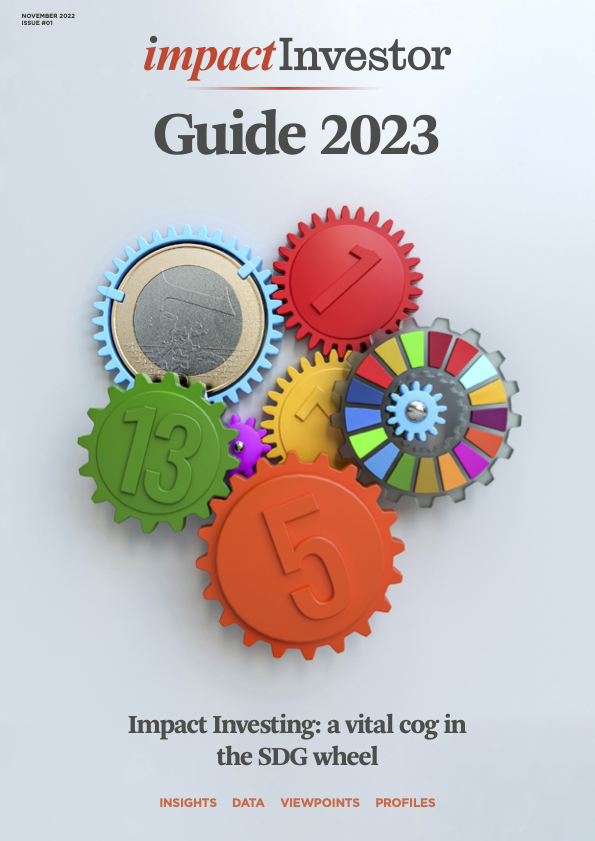Viewpoint: The CEO of the Global Steering Group for Impact Investment (GSG) reflects on the extraordinary rise of impact investing across Europe over the past decade and what lies ahead for the sector

The gains made by impact investing over the past few years in Europe have been nothing short of extraordinary. Just ten years ago, many of the first impact investment pioneers could have been forgiven for feeling alone in striving to get impact investing onto the European agenda.
The launch of the Social Impact Investment Taskforce, its successor the GSG and the subsequent rollout of National Advisory Boards (NABs), which continue to grow in number globally year-on-year, is a demonstration that impact is finally working and working at scale. It is also testament to the hard work of many very committed and visionary people across Europe as well as globally.
Impact is growing across the investment, banking and insurance segments including with mainstream financial actors. Yet it is worth noting that in most European countries, impact started out on a very modest scale with social enterprises and boutique investors and that remains an important part of the impact investment landscape across the continent. This is particularly true of smaller countries and Eastern Europe in particular.
The evolution of impact investing in Europe also needs to be considered in the global context. And nowhere is this more relevant than in the area of regulation and standard setting in relation to ESG.
ESG regulation
Today, ESG can mean two very different things: ESG, which seeks to reduce risk for investors and for the companies they’re investing in, and ESG, which is about investing sustainably, including for impact. These are two very different approaches but by carrying the same label, there is a danger that the risk reduction approach will overshadow the sustainability and impact approach.
Related to this is also the issue of green-washing and impact washing, which although vastly improved compared to the recent past, has come under greater scrutiny as the market has grown and impact and sustainable investing has been adopted by mainstream asset managers. The dearth of skills is part of the problem, so continuing to develop credible training by organisations such as Social Value International, will be an important focus moving forward.
The EU with the SFDR and its taxonomies, and the work of the European Financial Reporting Advisory Group, have come a long way to address these issues and must be acknowledged as the most forward-thinking approaches to the regulation of impact and sustainability more broadly. A group of the European NABs have been in close discussions with the EU teams on the details.
However, what we also need is a globally harmonised set of standards, and we will be getting this from the International Sustainability Standards Board. These standards, though still focused on single materiality and working on climate first, then social second, are key, especially for investors with global portfolios who would otherwise have to navigate multiple standards across multiple jurisdictions. The relations between the ISSB and the EU teams are solid, which should ensure the standards are adopted universally.
The US-based International Foundation for the Valuation of Impact and the European-led Value Balancing Alliance are also working on future-oriented approaches around impact transparency and impact monetisation, looking at the positives and negatives of each investment and attaching a monetary value to them, which will improve transparency accountability further.
But in trying to set standards and establish regulation for impact, striking the right balance between striving for a level of perfection that makes it almost impossible to operate and remaining true to the meaning of impact so as not to lose credibility and trust, will be crucial to the industry’s survival. This is particularly important for emerging markets as regulations move all the way down the value chains.
Looking ahead
Looking ahead, we will undoubtedly see greater consolidation between the social and environmental approaches to impact investing. Following the huge human suffering wrought by this year’s environmental catastrophes, there is a growing acceptance that you cannot separate the two.
In the UK, we talk about the Just Transition in relation to the move to a low carbon future. This brings together the environmental, the socio-economic and the community voice. It is likely that mainland Europe adopts the same approach as this has become a COP priority.
Impact investing is also about to hit its first global recession. With over €1trn invested globally in impact investing and another €2.5trn in sustainability-linked bonds and loans, we will be watching closely to see quite how investors handle global inflation and the global recession more generally.

Needs will unquestionably be greater and the loans and bond market will likely suffer, but the silver lining will come in the form of innovation. And in times of recession innovation thrives very well.
This article is part of the editorial content of the Impact Investor Guide 2023. You can download a digital copy of the guide here.





